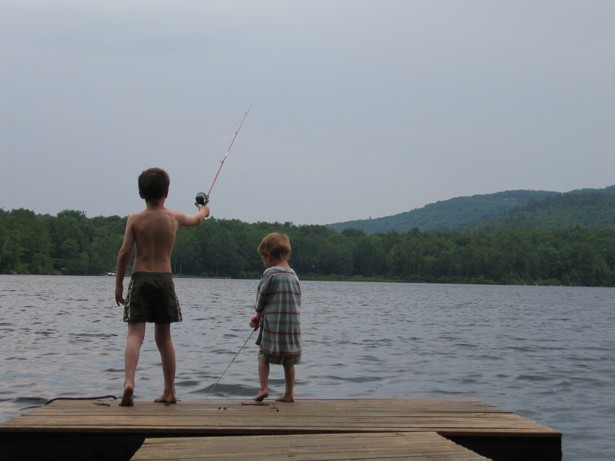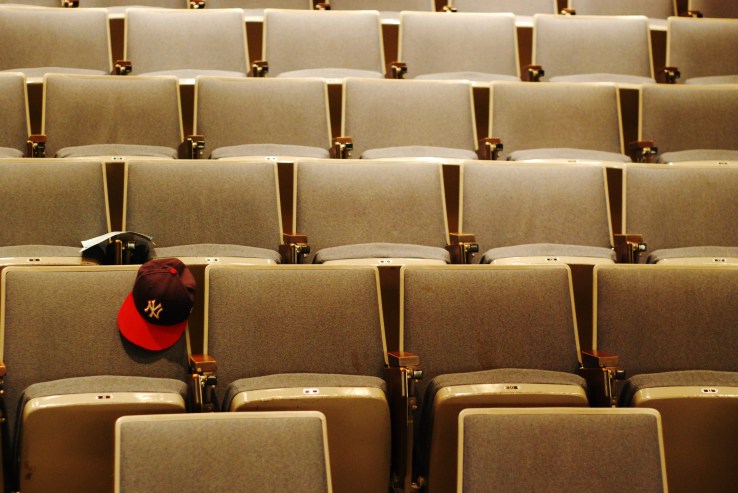Nick Littlehales: the man who showed Cristiano Ronaldo how to sleep
What is the professional journey to becoming Cristiano Ronaldo’s sleep coach? For former golf pro and bedding industry marketing guy Nick Littlehales, the path to one of sport’s most unconventional and interesting careers started in the late 1990s, when he wondered why elite sporting organisations and teams didn’t pay any attention to the importance of sleep.
He started by zeroing in on the world of football and contacted “his local club”, which just happened to be Sir Alex Ferguson’s Manchester United. “I was always fascinated on one hand how important this natural recovery process was but just that the general population, never mind sport, took it for granted,” he tells Guardian Australia while in Sydney to talk all things sleep.
“Things have changed a lot,” he says. “Technology and sports science has come to the forefront.” Littlehales’s previous experiences in the field came not from science or the world of academia but in the more practical process of designing, manufacturing and selling sleeping products – beds, mattresses and pillows.
Ferguson’s realisation was that even if he had a firm grasp on what players were eating, how they were training and what impact it appeared to be having on their performance, the club had no control or influence over what they did once they jumped into their luxury cars and drove away from the club’s training base.
With Ferguson persuaded that his players’ sleeping patterns should become a higher priority, Littehales scored early points with the manager for his success working with United defender Gary Pallister, whose debilitating back injuries eased once Littlehales discovered the player was sleeping on a mattress that hampered his injury treatment.
“You can never cure a lower back problem like that but we saw some significant improvements,” he says, “so that triggered [the club’s view] that maybe there’s something more in this.” Until then there had been a general acceptance that players would function better after a solid night’s sleep, but no meaningful attempts at addressing it properly. “All I did was open the door,” says Littlehales.
In no time he had become involved in the planning of United’s recovery rooms at their Carrington training facility, which piqued the interest of Arsenal manager Arsène Wenger. “[Clubs] started looking at peripheral vision. They started looking at pilates and yoga.”
The British press was equally intrigued by the mysterious new figure driving in and out of the club’s training ground. “They got tipped off that I was actually coaching the players on sleep,” he says. “That started to get people thinking about that whole area.” Sixteen years later he is a leading figure in the field, having assessed and reconfigured the bedrooms of a legion of international sporting stars as well as working with Chelsea, Real Madrid, England’s national side and a host of Olympians.
For the 2004 European championships, the FA employed Littlehales to travel ahead of the England squad to strip out and reconfigure team hotel rooms and set them up for recovery purposes. It was an unprecedented move at the time, each player’s room tailored to specific needs.
With elite athletes now spending so much of their life on planes, coaches and in hotel rooms, the only really surprising thing is that it took so long for a job like this to exist. Littlehales makes sure sportspeople get the right hotel rooms on the right floor, the right air conditioning and temperature control, plus appropriate lighting and beds. Most plush hotels, he says, are designed with hen parties, stag weekends and lazy holidays in mind, so feature generic beds designed to accommodate anyone between 50kg and 200kg. They’re certainly not tailored to the needs of elite athletes. “It’s about marginal gains,” he says of his role.
For the Team Sky’s Tour de France cyclists, Littlehales created “sleep kits” that replicated what he had previously specified for each rider at their home. First there’s a bedding “topper”, a thin layer of foam customised to the body shape and requirements of each athlete, which is either placed on top of the existing hotel mattress or, if it’s not suitable, on the floor. Each one can take up to 150kg without the user feeling the floor.Littlehales has a unique and encyclopaedic knowledge of which five-star hotels are best suited to athletes and harangues the ones that aren’t up to scratch into upgrading their mattresses and bedding. Other important factors are the potential for total black-out from the sun and temperature control (16-18C is the ideal range). But the bedding is crucial. “If they don’t tick the boxes I’m bringing my own or we’ll try another hotel,” he says.
Endurance events such as the Tour are mentally taxing, so he also instructs team bosses to ensure each rider has seven sets of white linen, to be washed, dried and replaced each night to give the rider a greater sense of calm. Filters are placed over air-conditioning vents to remove allergens from the room and each athlete wears nasal strips to open their airways and avoid mouth-breathing. Nothing is left to chance.
And what about the age-old theory that eight hours of kip per day is what we need? Rubbish, says Littlehales. “Nobody gets it and nobody achieves it.” He says everyone has different physical and mental recovery times but that for elite athletes, five 90-minute sleep cycles a day is optimal, no matter what order they are in. Training schedules are now often tailored around that need and many club training facilities now equipped with sleeping pods – specially-designed bedrooms for strategic napping.
Punishing travel and playing schedules, public scrutiny and the pressures of mainting such high-profile careers are what Littlehales believes lead to sportspeople taking risks with sleeping tablets and self-medicating to sleep. “They’re overstimulated to cope. That can be caffeine … sleeping tablets just get popped because they can’t sleep or they think they won’t be able to sleep.”
Routine is also vital. Each athlete has their own chronotype; they’re either morning people or night owls, a factor Littlehales says is genetic. “If you don’t identify what that chronotype is you become an in-betweener,” he says, adding that this discovery is of particular importance to footballers, limited-overs cricketers and tennis stars, whose job is to perform at their optimal capabilities at nighttime. Some are simply born with an ability to function at a high level well into the night, others need to adapt.
Compounding all these issues in the last decade has been the advent of smartphones and electronic tablets, which allow players to lie in bed reading everything that’s written about them online, a pitfall Australian tennis star Nick Kygrios admitted to during his recent Wimbledon campaign.
“Our exposure to artificial light has just gone through the roof,” he says of the dramatic shift from phones that were for talking and listening to bright screens that athletes often stare at until all hours of the night. “That light is so intense and combined with everything else like the TVs, it’s all about wake, not sleep … we’re just letting it infiltrate our lives without any control.”
Accordingly, it’s impossible even for someone in Littlehales’s position to convince the modern athlete that they should avoid Googling themselves or Twitter-searching their own name, as many do. Twenty years ago support staff could keep players away from newspapers and TV bulletins, but with all of the internet in the palm of their hand, the curious modern athlete is never far from online noise.
“It’s too tempting just to see what might be out there,” he says. “Their agents and their media people try to control it but, just like all of us, they like to tweet or put that picture up.” As Littlehales says this he is standing at the window of his own hotel room and notes that even in as intimate a space as that, an athlete is never safe from scrutiny. Perhaps someone in the building across has spotted them, snapped a photo and tweeted it out for the world to see before the athlete has crossed to the other side of the room.
The one electronic device Littlehales does recommend is a small dawn light simulator that emits gradual light to replicate the natural circadian process of sunrise. In an ideal world every athlete would combine one of those with black-out curtains, temperature control and clean air.
Equally exasperating but beyond the control of sleep coaches and conditioning staff is that many young athletes have grown up in the world of online gaming and take consoles with them wherever they go, playing against team-mates and friends until all hours of the night as relaxation from the stresses of their professional lives.
“When you combine all of those factors it is extremely counterproductive but in sport, the way these guys get away from all the intensity is to lock themselves in rooms and play games. If they can’t sleep, they play games. They play against their mates.”
These days sleep coaches are much less likely to be measuring sleep time or tracking sleep quality through wearable devices, as was traditionally the case, but simply removing the impediments to relaxation and sleep from the athlete’s sleeping environment.
In his ideal scenario, Littlehales says athletes wouldn’t be banned from having sex before big games (“absolute crap”) but most definitely sleep solo, with partners leaving for a separate room once it’s time to get 40 winks. Many top football clubs agree. At Real Madrid’s training centre only the player himself can gain access to his customised sleeping pod, so Ronaldo sleeps alone. Littlehales says people would be surprised by the spartan, purely functional bedroom facilities at Manchester City’s academy, where the emphasis is on player recovery rather than pampering. City players will sleep there before home games.
For players who do sleep with their partner there are many extra factors to consider; the size of the bed; whether the partner is a light or fitful sleeper; that a right-handed athlete is best sleeping on their left side but on the right side of the bed, facing out to the wall or window. Still, even Littlehales says I’m taking it a bit too far suggesting that right-dominant athletes might ideally find left-dominant partners and vice versa. At the extreme end of the scale are Roger Federer’s two separate houses for use during Wimbledon, one for himself and his training and conditioning staff, the other for his family.
Remarkably, Littlehales says most elite athletes he works with have previously paid no attention to their sleeping environment at home, sending a partner or assistant out to buy their mattress and bedding. At worst that decision can lead to shoulder and neck complaints and contribute to other injuries. “I very rarely find that they’re sleeping on the right stuff,” he says.
But for those who’ve always wondered what it would be like to get inside the bedroom of a famous sportsperson, Littlehales has a sobering insight into the levels of excitement found there; the very same TVs, alarm clocks, tablets and smartphones that are stopping the rest of us getting a decent night’s sleep.





